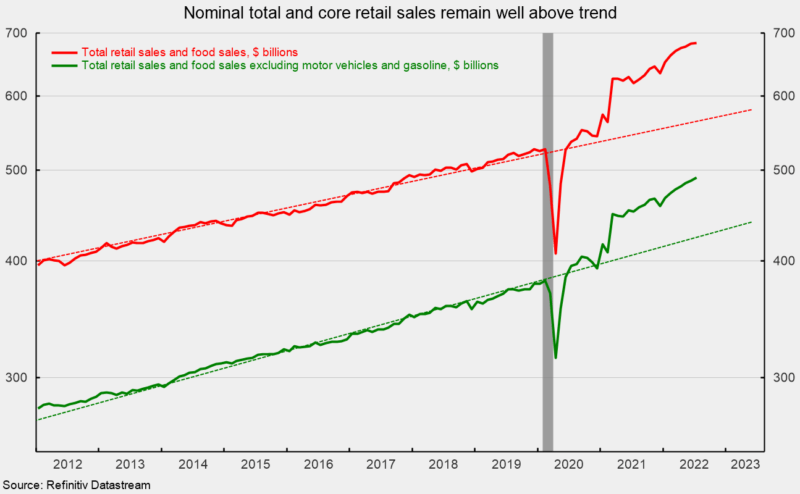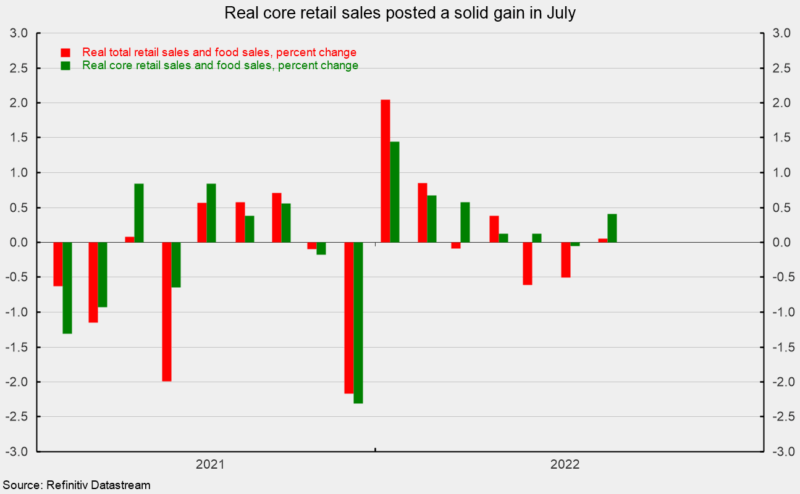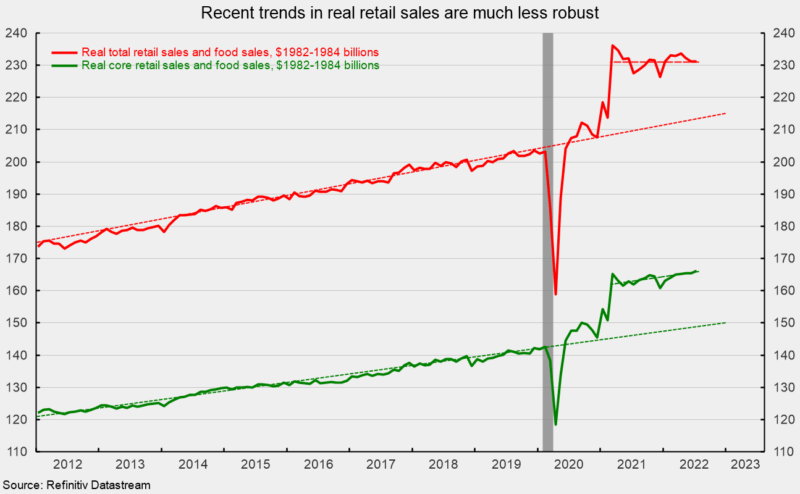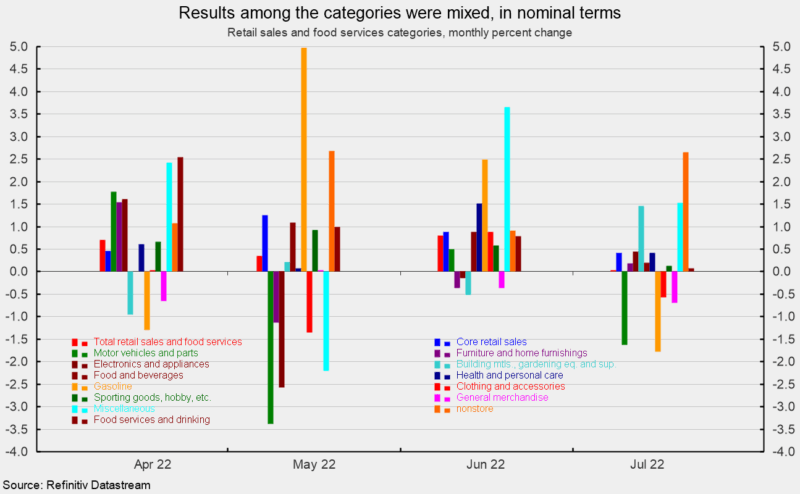[ad_1]
ipopba
By Robert Hughes

Total nominal retail sales and food-services spending were unchanged in July, following an 0.8 percent increase in June. From a year ago, retail sales are up 10.3 percent and remain well above the pre-pandemic trend (see first chart).
Nominal retail sales excluding motor vehicle and parts dealers and gasoline stations – or core retail sales – rose 0.7 percent in July, matching the 0.7 percent gain in June. From July 2021 to July 2022, core retail sales are up 9.3 percent. As with total retail sales, core retail sales remain well above the pre-pandemic trend (see first chart).


However, these data are not adjusted for price changes. In real terms (adjusted using the CPI), real total retail sales were roughly unchanged (up less than 0.1 percent) in July following a 0.5 percent decrease in June and a 0.6 percent decline in May (see second chart). From a year ago, real total retail sales are up 1.4 percent. As with nominal retail sales, real retail sales remain well above its pre-pandemic trend, but since March 2021, real retail sales have been trending essentially flat (see third chart).
Real core retail sales posted a solid 0.4 percent rise in July, after declining less than 0.1 percent in June (see second chart). Over the last twelve months, real core retail sales are up 2.6 percent. While real total retail sales have been trending flat recently, real core retail sales have been trending slightly higher (see third chart).

Categories were generally higher in nominal terms for the month, with nine up and four down in July (see fourth chart). The gains were led by nonstore retailers, up 2.7 percent for the month, followed by building materials, gardening equipment and supplies (1.5 percent), and miscellaneous retailers (1.5 percent).
Gasoline spending led the decliners with a 1.8 percent drop. However, the average price for a gallon of gasoline was $4.77, down 7.4 percent from $5.15 in June, suggesting price changes more than accounted for the drop. Other declines came in motor vehicles and parts dealers (-1.6 percent), general merchandise retailers (-0.7 percent), and clothing and accessory stores (-0.6 percent).
Overall, nominal total and core retail sales remain well above trend. However, rising prices are still providing a significant boost to the numbers. In real terms, total retail sales were essentially unchanged and have been trending flat since March 2021. Real core retail sales posted a solid gain for the month and appear to have a modest upward trend.
Sustained upward pressure on prices is likely affecting consumer attitudes and spending patterns. As more and more consumers feel the impact of inflation, real consumer spending may come under pressure. Furthermore, an intensifying Fed tightening cycle may lead to significant demand destruction. Both phenomena raise risks for the economic outlook. In addition, the fallout from the Russian invasion of Ukraine and waves of lockdowns in China remain threats to economic expansion. The outlook is highly uncertain. Caution is warranted.
Editor’s Note: The summary bullets for this article were chosen by Seeking Alpha editors.
[ad_2]
Image and article originally from seekingalpha.com. Read the original article here.

